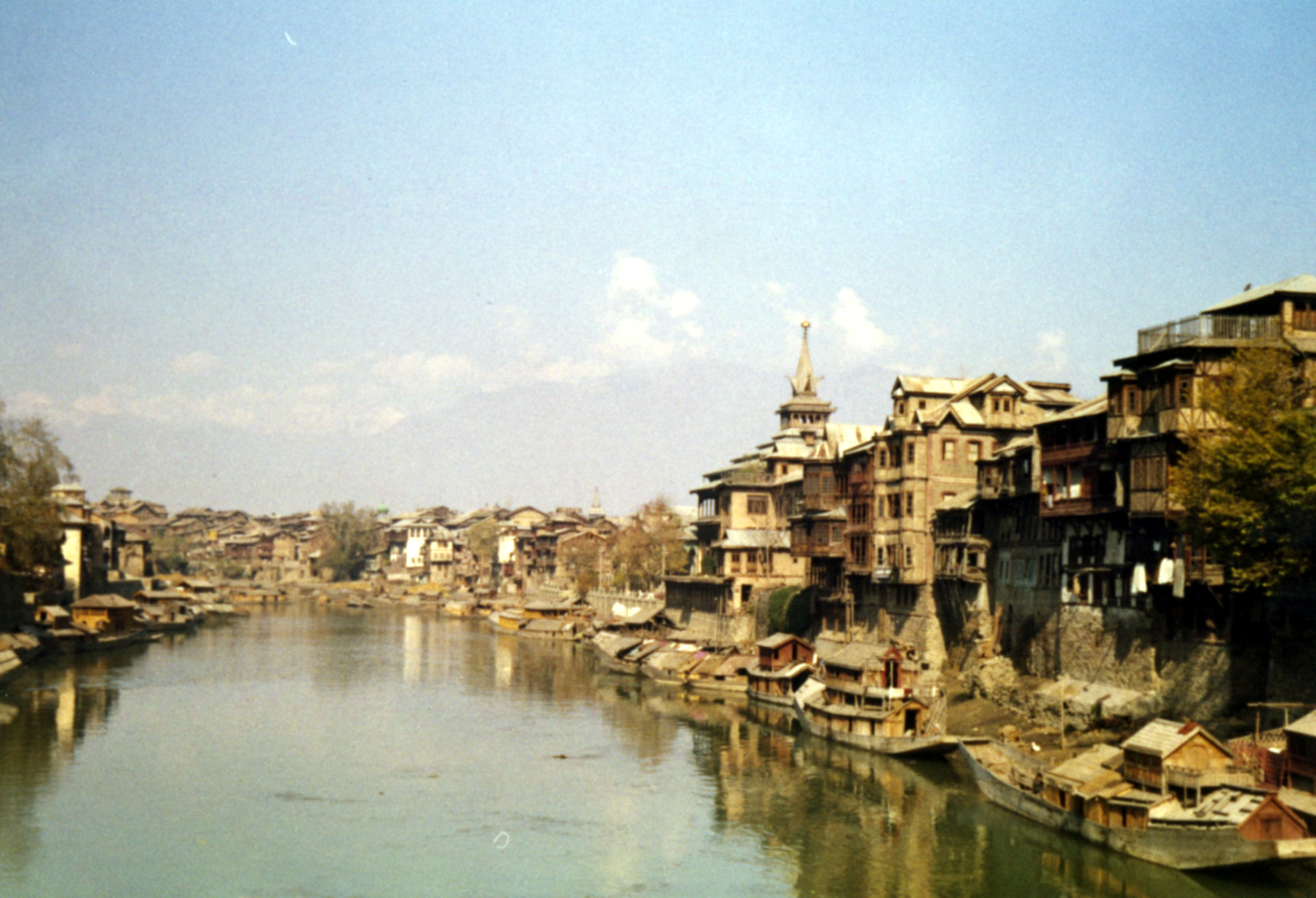
A jewel of a destination, Kashmir is one of the most amazing holiday destinations in India. Srinagar, the state’s winter capital, is the first stop for most travellers to Kashmir; and with its great lake and meandering river, its exquisite pleasure gardens and romantic shikara rides, the old-world charm of its houseboats and the ageless grace of its architecture, the city is a fitting introduction to the many enchantments of the valley. The vast Dal lake is, of course, Srinagar’s emblematic feature, and its deep waters carry the most popular of Srinagar’s attractions: houseboats and shikaras. Many visitors are content to spend a great part of their holiday aboard these waterborne hotels, watching the lake’s traffic float by from cushioned balconies, venturing into the houseboat’s walnut-wood interiors for delicious, fragrant Kashmiri cuisine. If at all one can bring oneself to leave the boat, it is to step into another – the dainty, canopied shikaras. Fitted with generously cushioned seats and footrests, these elongated little boats constitute one of the great luxuries of the world, and have long been the very epitome of romance.
On the shores of the Dal are the great Mughal Gardens, glimpses into an earthly heaven of many-hued flowers, carpets of grass and playful fountains. On the two great hills that overlook the city and the lake – Hari Parbat (Kohi-e-Maran) andShankracharaya (Takht-e-Sulaiman) are reminders of the city’s eclectic past: graced with ancient temples and medieval mosques, imposing fortress walls and simple, quiet shrines. The sacred is equally pervasive in the old city, lined along both sides of the Jhelum river. Here are the wooden Islamic shrines with pagoda-like roofs that are so distinctive of Kashmir, and here too are the spires of old temples built amidst winding lanes of wooden houses with their delicately carved balconies, centuries’ old bridges and bustling markets.
Dal Lake : Dal Lake is a lake in Srinagar, the summer capital of Jammu and Kashmir. The urban lake, which is the second largest in the state, is integral to tourism and recreation in Kashmir and is named the "Jewel in the crown of Kashmir" or "Srinagar's Jewel". The lake is also an important source for commercial operations in fishing and water plant harvesting.
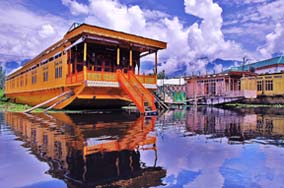
The shore line of the lake, is about 15.5 kilometres (9.6 mi), is encompassed by a boulevard lined with Mughal era gardens, parks, houseboats and hotels.
Scenic views of the lake can be witnessed from the shore line Mughal gardens, such as Shalimar Bagh and Nishat Bagh built during the reign of Mughal Emperor Jahangir and from houseboats cruising along the lake in the colourful shikaras. During the winter season, the temperature sometimes reaches −11 °C (12 °F), freezing the lake.
Shankar Achariya : A beautiful Shiva temple situated on a picturesque location on the Gopadari Hill on the South East of Srinagar. This temple is situated at a height of 1100 feet above the Srinagar city The name of the Temple is after the great philosopher Shankaracharya who visited the valley about ten centuries ago.
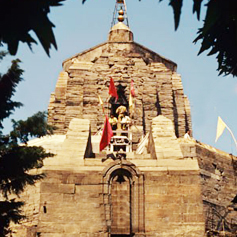
The Temple is built on a high octagonal plinth approached by a flight of steps.Shankarachar is a detached ridge of igneous rock to the south-east of Srinagar, separated from the Shilamar Range by the Aita Gaj Gap. The summit of the hill is crowned with a picturesque edifice.
This hill was called Jetha Larak and afterwards it was named Gopadari Hill. Some are of opinion that the temple at the top was originally built by King Sandiman (2629-2564 B.c.). There were 300 golden and silver images in it. About 1368 B.C. King Gopadittya founder of Gopkar repaired it and bestowed to the Brahmans of Arya Varta, agrahars which he built on its top.
King Sandimati (34 B.C.-A.D. 13) improved and added to the temple. Zain-Ul-Abdin (1421-1472 A.D.) repaired its roof which had tumbled down by an earthquake. Sheikh Ghulam Mohi-Din, a Governor (1841-46) also repaired its dome. Recently, the dome was repaired by Swami Shivratnanand saraswati at the request of a Nepali Sadhu who gave him financial aid.
The temple is under the control of the Dharmartha Department. They have built two small buildings for the sadhus who live there. There is at the place an old stone shed which is called 'Parvatihund bana koth' (the store-house of goddess Parvati).
Mughal Gardens : Mughal gardens are a group of gardens built by the Mughals in the Persian style of architecture. This style was heavily influenced by the Persian gardens particularly the Charbagh structure.[1] Significant use of rectilinear layouts are made within the walled enclosures. Some of the typical features include pools, fountains and canals inside the gardens.
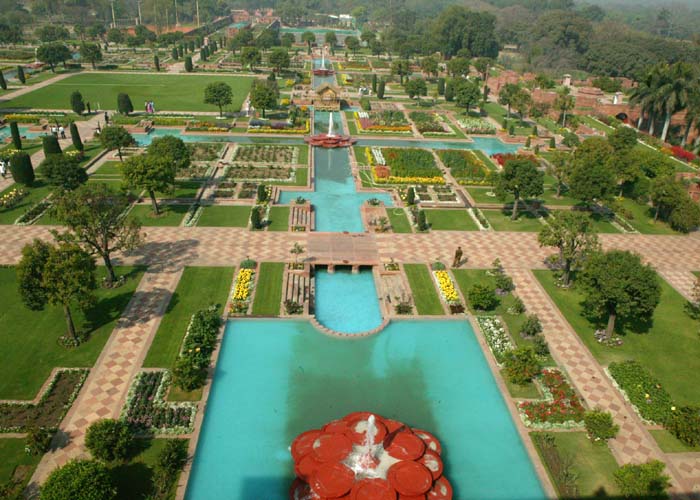
The founder of the Mughal empire, Babur, described his favourite type of garden as a charbagh. They use the term bāgh, baug, bageecha or bagicha for garden. This word developed a new meaning in India, as Babur explains; India lacked the fast-flowing streams required for the Central Asian charbagh.
The Agra garden, now known as the Ram Bagh, is thought to have been the first charbagh. India, Bangladesh and Pakistan have a number of Mughal gardens which differ from their Central Asian predecessors with respect to "the highly disciplined geometry".
An early textual references about Mughal gardens are found in the memoirs and biographies of the Mughal emperors, including those of Babur, Humayun and Akbar. Later references are found from "the accounts of India" written by various European travellers (Bernier for example).
Mata Kheer Bhawani Temple : Mata Kheer Bhawani is a temple dedicated to the Goddess Kheer Bhawani (originally just Bhawani) constructed over a sacred spring. The worship of Kheer Bhawani is universal among the Hindus of Kashmir.
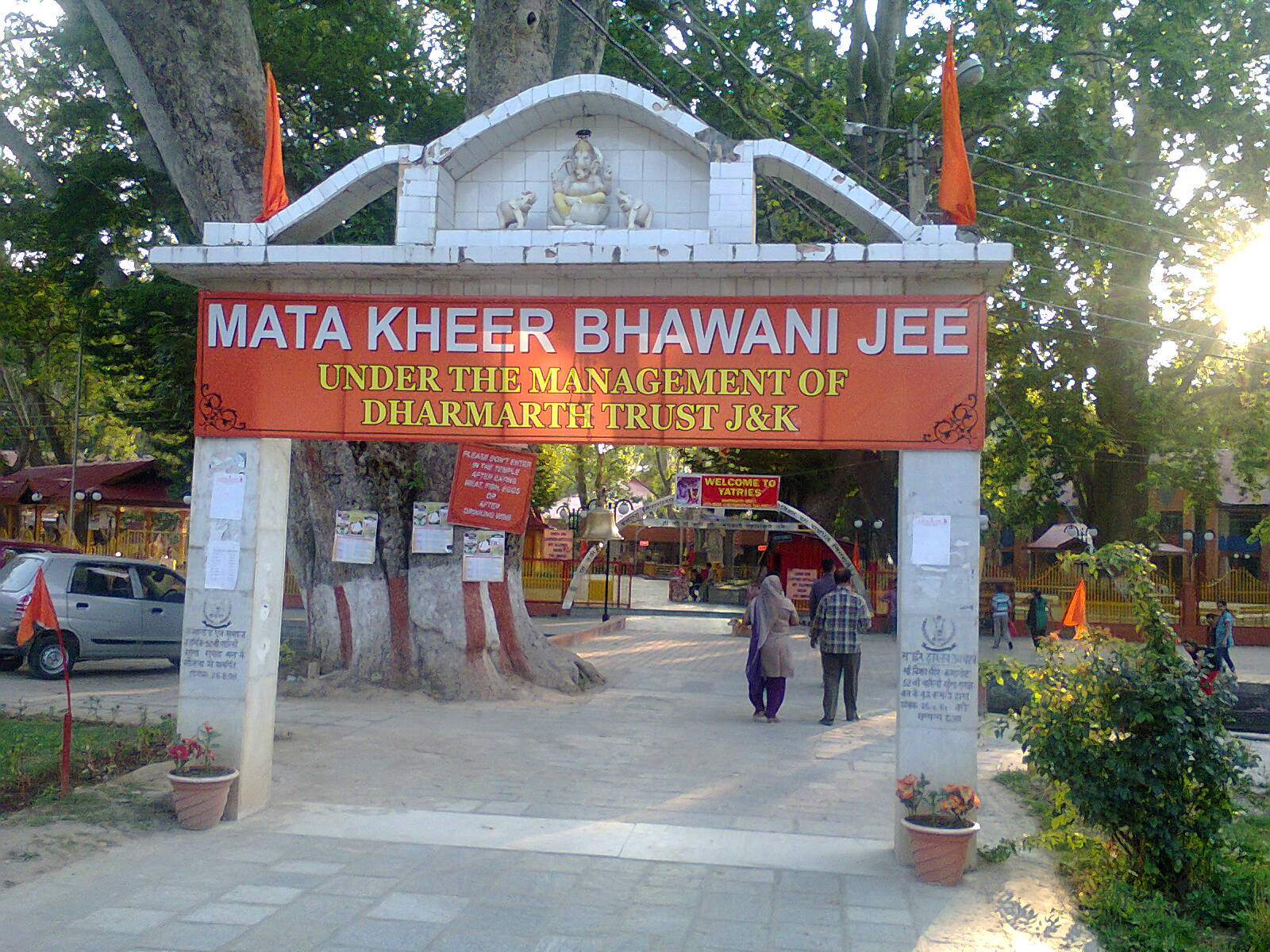
The temple is situated at a distance of 14 miles east of Srinagar near the village of Tul Mul. The term kheer refers to rice pudding that is offered in the spring to propitiate the Goddess, which became part of the name of the temple. As is the custom with Hindu deities, she has many names: Maharagya Devi, Ragnya Devi, Rajni, Ragnya Bhagwati, and so on.
It is the most important temple for the followers of Historical Vedic Religion in Kashmir, known as the Kashmiri Pandits. Around the temple is an area covered with smooth and beautiful stones. In it are large, old-growth chinar trees beneath which the pilgrims sit or sleep on mats of grass. While most of the colours do not have any particular significance, the colour of the spring water changes occasionally.
Hazratbal :The Hazratbal Shrine, is situated on the left bank of the famous Dal Lake in Srinagar. This unmatched reverence is anchored in the love and respect for the Prophet Muhammad (peace be upon him), whose Moi-e-Muqqadas, the sacred hair from the beard of Prophet Muhammad (peace be upon him) is preserved here.
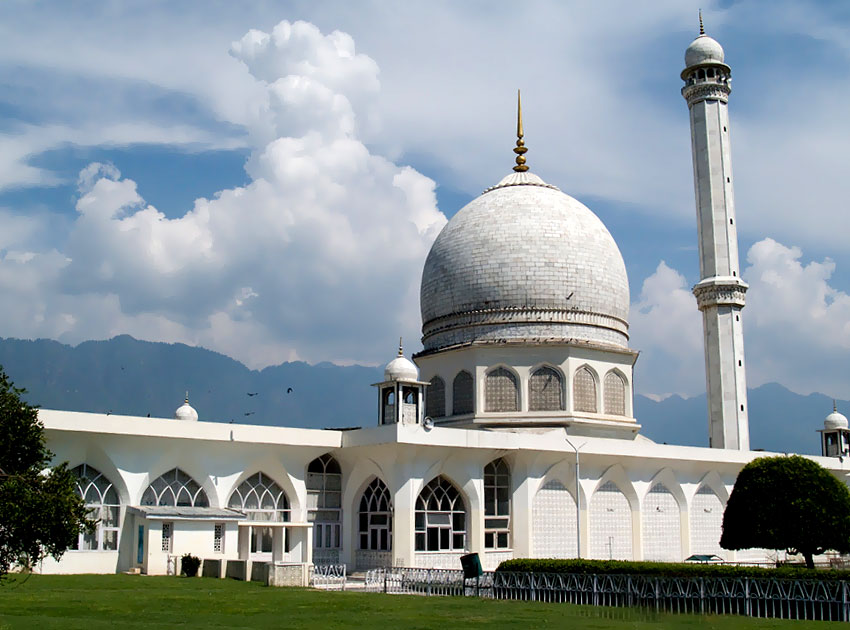
The Hazratbal mosque is situated in Srinagar only 8 Kms from Lal Chowk and 7 Kms from Tourist Reception Center, on the western banks of the picturesque Dal Lake. Facing the beautiful Nishat Bagh, the mosque offers a spectacular view of the lake and the mountain afar.
This revered shrine houses the Moi-e-Muqqadus (preserved sacred hair) of Prophet Muhammad (peace be upon him). Public display of the Moi-e-Muqqadas takes place only on religious occasions.
Some of the other names of the Hazratbal mosque are Assar-e-Sharief, Madinat-us-Sani and Dargah Sharif. One of the most revered Muslim shrines, Hazratbal is an epitome of the love and respect of Muslims for the Prophet.
The Hazratbal Mosque of Kashmir is a beautiful structure of immaculate white marble. The Muslim Auqaf Trust headed by Sheikh Mohammad Abdullah started the construction work on this marble structure in 1968.